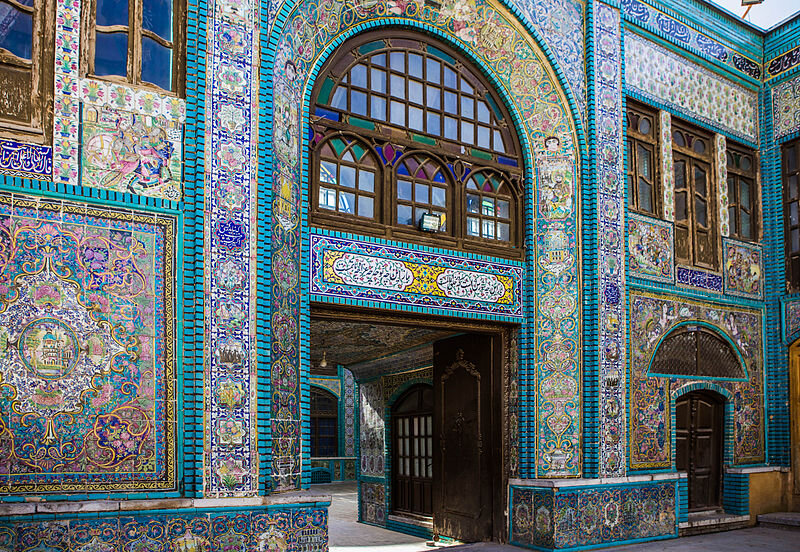Moaven al-Molk Tekyeh to be shielded against moisture to avoid decay

TEHRAN – A plan for groundwater disposal is being prepared for the Qajar-era (1789–1925) Moaven al-Molk Tekyeh in the western Kermanshah province to protect the historical structure against erosion.
The Tekyeh has always had a problem with moisture as it has been built in the path of groundwater, and this moisture has caused a lot of damage to the building and especially to its tilework, the provincial tourism chief has said.
The tiles, which decorate the interior space of the structure, have been continuously restored for several years and so far hundreds of square meters of these tiles have been repaired, Omid Qaderi announced on Saturday.
However, part of the problem has been solved by directing groundwater into a reservoir and then pumping the collected water into the nearby rivers, the official added.
He also noted that a restoration project on the other parts of the building is planned to be implemented in the near future.
Due to its special architecture and unique tilework, Moaven al-Molk Tekyeh has always been a popular destination for art lovers and history buffs.
The monument was inscribed on the National Heritage list in 1975.
During Muharram, apart from mosques, each neighborhood sets up its establishment for the ceremonial processions of the month known as Tekyeh (or Tekkiyeh), which are venues for gathering of mourners known as ‘heyat’ (literally meaning group or delegation) who honor the life of Imam Hussein (AS).
Tekkiyeh (stemming from the word eteka, meaning backup or reliable) was historically a staying place for visiting pilgrims and dervishes who relied on the goodness of the benefactors for daily sustenance. Today Tekkiyehs, however, are specific locations for mourners who meet and participate in religious gatherings after which they head out on the streets in groups known as dasteh (literally meaning cluster) to parade dramatic mourning.
ABU/AFM

Leave a Comment